#fontaine lore
Text
[4.0]: A Theory On Rhinedottir, Alchemy, and the Meaning of Sin
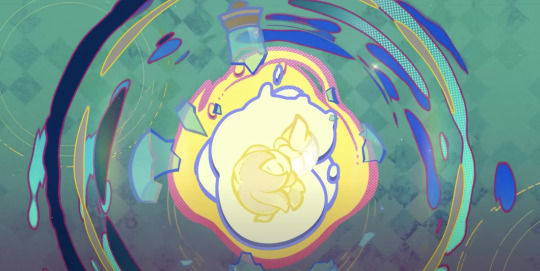
“One thought may end all calamity, and there will always be thoughts that may transcend time.” -The Meaning of Aeons
“Separate the dust in the flames with joy, and extract the exquisite from the crude. For all in the universe comes from a single source, and all things may be derived from a single thought.” -Cinnabar Spindle
I’ve been wanting to do some Rhinedottir speculations for a while. With the new Ancient Colors world quest in Fontaine, I think now is a good time to propose a theory about this mysterious member of the Hexenzirkel, her approach to alchemy, and the reason she is a “sinner,” especially within the context of one of the Archon Quest’s central questions: what does it mean to be “born with sin”?
SPOILERS: Up to Act II of the Fontaine AQ (just Primordial Sea stuff), and Ancient Colors.
Although Rhinedottir is never mentioned by name in Ancient Colors, all of the signs of her are there: Mamere’s identity as an artist, Elynas’ otherworldliness and similarities to Durin, and the differences between the Melusine’s perception of the world and our perception of it (or their aesthetics, which we will touch on later). Ancient Colors is trying to remind us of Dragonspine and, if you were playing during this time, Shadows Amidst Snowstorms, and I believe it is doing so because it is key to the secret of the Primordial Sea and the prophecy of Fontaine.
We’ve heard Rhinedottir’s perspective only twice so far, and that was in the Windblume festival from this last year and in Cinnabar Spindle’s lore. Though we still don’t know much about her, she does identify herself as a “mother” of many children, and that she is raising the only son she has left. This, of course, is Albedo.
We also know that she is considered a "sinner" at the center of the Cataclysm who unleashed "an army of shadowy monsters" onto Teyvat, but we have very little grasp of what exactly is meant by "sinner," and what if any consequences this label has had on her since then. Although every Hexenzirkel witch will undoubtedly be very important to uncovering the truth of Teyvat, Rhinedottir presents a particularly interesting case as the only one whose activities may have caused cataclysmic destruction, as opposed to Alice's general mischief and strange sense of humor.
It’s almost nothing to go off of, but I hope to demonstrate in this speculative theory that it’s more than enough to arrive at some answers.
Psychoanalysis 101, Round 2
To better explain what Durin, Elynas, and Rhinedottir’s other children are, we need to use an analogy rooted in Freud’s psychoanalytic theory of dream interpretation. This is a super TL;DR version of it and way oversimplified, but if you’re interested I wrote a more detailed theory about the significance of dreams in Genshin that has a full explanation of it there. (Also, it should be said that these were just Freud’s theories, please do not take any of the following as an accurate description of the human psyche and how it works. We are just having some fun for the sake of media analysis.)
Freud thought that dreams are the mind’s means of expressing unfulfilled wishes, and that the psychological purpose of dreaming is to “fulfill” those wishes. In A General Introduction to Psychoanalysis, he gives an example of this through a little girl’s dream where she was sailing on a lake: this dream was born out of an unfulfilled wish in her waking life, where she had to stop sailing on the lake despite wishing to continue. Hence, “I wish to sail on the lake” becomes “I am sailing on the lake” through the dream.
Further, Freud thought these unfulfilled wishes are “forgotten” in our unconscious mind when we are awake, censored by the ego to protect our conscious mind, but that at night this censorship is weakened. This is what allows a dream to occur while we sleep.
These unfulfilled wishes are often more complicated than a childish wish to keep sailing on a lake. Think about it this way: a wish is, at its core, a thought in our head, or a desire. What do we do with the thoughts we don’t like, the ones that are unbecoming of us or are unacceptable to fulfill?
We deny them.
Specifically, we repress them into the unconscious, where they are forgotten. Thing is, even if we temporarily forget these thoughts, they won’t just disappear from existence - they fester in the unconscious, waiting to be expressed. The dream, therefore, is the unfulfilled wish/repressed thought’s attempt to cross the boundary from the unconscious mind into the conscious mind - to be acknowledged, or indeed remembered.
“Unfulfilled Wishes”
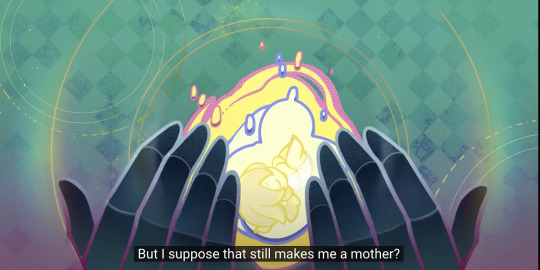
Making sense so far? If so, try to think of Teyvat like this: everything that is visible, everything above ground that the light touches and that can be perceived is like the ego and conscious mind. All of these things are what you’re aware of, things that you “know” and can make sense of, things that you understand, things that fit into rules and laws and order.
Now, think of everything in Genshin that is “unseen” and “unknown”: the Abyss, the spaces underground, forbidden knowledge, things that are “not from this world,” from beyond the firmament…these are like things from the unconscious mind, the repressed thoughts that we deny in ourselves because they may reveal a truth we are unwilling to face. These things are comparatively chaotic in nature, things we’d rather avoid, or things that we wish to forget.
We know that Elynas’ and Durin’s bodies are composed of matter that’s foreign to Teyvat, and that this is a major reason why they are incompatible with Teyvat and cause its destruction. This would make them more similar to a repressed thought, something that we don’t understand or know, and attempting to understand it destabilizes our sense of self, our “truth.” It follows that their home, the Abyss, is most similar to our unconscious mind, and Teyvat is most similar to our conscious mind.

Elynas: Before I was born, I floated in the cosmic darkness. It was cold there, and lonely. I was so sad, then, and I would often cry.
So, as their mother, who or what is Rhinedottir in this analogy? Well, we can be a lot more specific than calling her a “sinner.” In fact, she’s a dreamer, and alchemy is the medium through which she “dreams”:
This was a story from long ago...
Unborn life, unfulfilled wishes,
Tragic dreams at the edge of the universal darkness that could never come true,
Indwell my body, and descend unto this world.
Then, my lovely children,
Like rainwater flowing into creeks, and plants growing towards the sun,
Go unto a lovely place, and display your own beauty there with pride.
This is a memory, a memory that a child named Durin had of his mother…
"Thank you, Mother, thank you."
"You gave me wings to soar and a mighty form."
"Mother, I wish to go to a land of lovely songs,"
"I will tell them about you, Mother, and about everyone else."
"I shall tell them that the place where I was born is beautiful."
-Festering Desire
Rhinedottir’s children, then, are like thoughts or ideas that she is bringing to life, or “making conscious,” by moving them from the Abyss to Teyvat. It may even be the reason why the sword from The Chalk Prince and the Dragon is called Festering Desire in the first place - it’s a reference to the idea of repressed thoughts, wishes, and desires festering in the unconscious.
Should the analogy hold true, it provides some insight into what her intentions may have been in creating her Abyssal dragons. But before that, we need to take a little detour into Enkanomiya and brush up on some lore.
Denouement of Sin
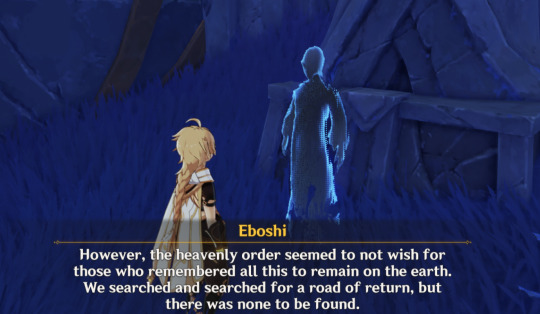
Eboshi: However, the heavenly order seemed to not wish for those who remembered all this to remain on the earth. We searched and searched for a road of return, but there was none to be found.
Remember these hologram-looking dudes? They are the Shades of Tokoyo, also known as Sinshades. They are described as afterimages of the former citizens of Byakuyakoku preserved by Istaroth’s favor, specifically those citizens’ most powerful emotions, and they are only visible during Evernight:
Eboshi: Due to the phenomenon known as Sinshades, the “past,” “history,” and “truth” of Enkanomiya would endure even if left to their own devices.
Eboshi: As such, great effort was expended, not that we might remember, but that we might “forget.” Lady Sangonomiya was of this view.
Like a dream, Sinshades only appear at night, and they are a kind of embodiment of history or “truth” that Watatsumi Island has chosen to forget, representing the thoughts and emotions of those who once lived in Enkanomiya. Using Freud’s theory of dream interpretation as a framework, Enkanomiya then functions as Watatsumi Island’s unconscious mind.
Put another way, if all Sinshades are the result of strong emotions preserved in time through Istaroth’s favor, then those emotions are like thoughts, and that would make the Sinshade a “physical” form or expression of those thoughts. So, when we call the afterimages the “Sins of Tokoyo,” we are in effect calling them the “Dreams of Tokoyo,” because they are the thoughts and emotions of Enkanomiya given form, and that’s what dreams do: they convey thoughts and feelings through a series of images.
Through the Sinshades, we see an implicit association with the concepts of dreaming and sinning in Genshin’s worldbuilding, and through them we understand that they are not so different from one another.
A Brief Note on Aesthetics
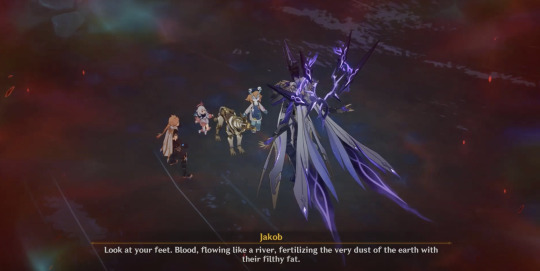
Jakob: Look at your feet. Blood, flowing like a river, fertilizing the very dust of the earth with their filthy fat.
It may have struck you how various Melusine perceive reality in a way that greatly differs from the things we see, as if at times their perception was “flipped,” if not somewhat strange. By the end of Ancient Colors, it’s clear that this is due to the Melusine being born of Elynas, who is not from this world. A similar phenomenon can be seen in both Durin and Elynas, the former imagining itself dancing with the people of Mondstadt before it “woke up” from this dream to Dvalin’s fangs in its neck, and the latter realizing that the things that it finds fun are destructive and harmful to the people of this world.
This is a part of the commentary present in several world quests and commissions in Fontaine that deal with “aesthetics,” or one’s own sense of beauty. Aesthetics are principles that differ on both large and small social scales, varying between groups of people and between individuals (see Salsa’s and Ubu’s aesthetic disagreement), and they can change throughout time as values change. In other words, they are informed by perspectives.
For example, think of what we know so far about the Primordial Sea. Neuvillette wonders how the Primordial Sea could be capable of giving life and then “suddenly reversing itself” so that it instead “devours life,” but this is just his judgment of what the sea does, and ultimately his perspective. Many others view the properties of the Primordial Sea differently from him: to them, the prophecy is comforting because it signals a “return,” or a “homecoming.” To take it a step further, Neuvillette may be making an assumption by stating that the sea has reversed itself. Perhaps this is just how the sea is, perhaps this is its “truth.”

Verenata: The "truth" will not be limited or constrained by the eyes and perspectives of the viewer, and won't be distorted by what is in their heart. It objectively exists, and it just is...like the white sand, like the bones of seastars, like the waves that crash and pound...those are "truth."
Now, imagine that you are staring at a 3D object from a 90 degree angle. If I ask you to describe the object from where you're standing, you'll be able to accurately tell me about what roughly half of the object looks like, but you won't be able to accurately describe the other half of it without help from someone standing on the other side of the object.
But how can you be sure there even is another side of the object, or that it's any different from the one you see now? From your perspective, what is already visible to you may seem sufficient to describe the object in its entirety. In other words, your perspective becomes your "truth."
It is only through considering additional perspectives that we broaden our own understanding of reality and expand on our "truth." However, broadening our perspective is usually not a comfortable experience, as is typical when we engage with ideas that differ from our own. Part of expanding our "truth" requires us to shatter our current understanding, pick up the pieces, and reassemble them into a shape that makes space for these other ideas and their "truth."
For example, when we confront Jakob at Elynas' heart, he describes the rushing currents beneath our feet as Elynas' blood. To the player, who has been swimming around in that for a couple of hours by that point, this idea is macabre and horrifying. However, when we consider Jakob’s perspective, his “truth,” it also expands our understanding of Elynas as a being that is somewhere between dead and alive, sleeping if you will, and that he is more than capable of waking up from his slumber with the appropriate stimulus. Another example is Canotila, who saw the wasteland in Rene's Book of Esoteric Revelations as a peaceful forest. When we consider Canotila's "truth," her aesthetic sense doesn't change the way we see the wasteland, but it does show us something equally important: the way that we experience the wasteland is not the only way it can be experienced.
If we return to the other ever-present metaphor of alchemy as a form of painting, we can see that Rhinedottir’s aesthetic sense greatly differs from what is acceptable and compatible with Teyvat. But, just like Mamere, she paints regardless of whether her paintings are understood by a greater audience. In time, Teyvat's "aesthetics" may change again, and perhaps her "art" will be received differently when that time comes.
Concluding Thoughts
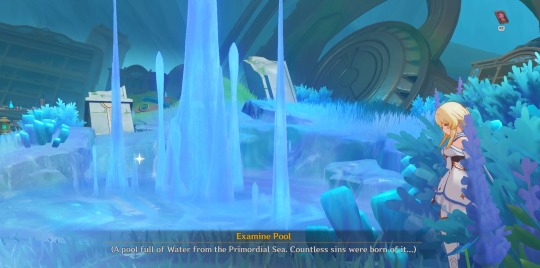
(A pool full of Water from the Primordial Sea. Countless sins were born of it…)
So, that is why I think Rhinedottir was deemed a sinner. She sinned by “dreaming” up these chaotic life forms that were not from this world, bringing them into being through the Art of Khemia, and telling those chaotic life forms that they were beautiful, too, that the ordered and lawful world of Teyvat just needed to realize how beautiful they were. Maybe Rhinedottir was dreaming of a new world, one where her children’s wishes could be fulfilled, where they could exist with everyone, and maybe creating that world required the destruction of this one. You could also think of her as someone who has introduced “external variables” into Teyvat, which, hmmm..:
“...No matter how many times I derive it, the result remains the same, though this result is not expected... Unlike the world depicted in these ancient texts, there will be no more new civilizations born... Unless we consider introducing "variables" from outside the system... If it was that sort of power, there might be a chance…” -Enigmatic Page I, Book of Esoteric Revelations
In this way, her “children” (thoughts) were all “born with sin,” or are born from sin (dreams). If Rhinedottir is a dreamer, then alchemy is the way that she dreams: it allows her to give forms to these thoughts. And if you buy that, then there are some serious implications to consider from this whole notion of Fontainians being “born with sin,” and just what exactly the Primordial Sea might be. Definitely something to think about while we wait for 4.1.
One last point that is more of an aside than anything else: Rhinedottir’s only remaining child is Albedo, but through this lens we see that he is not just the culmination of the Primordial Human Project, the creation of a human through the power of alchemy, but also the only known example of Rhinedottir’s “ideas” that coexists with Teyvat as it is now. As for her known extant grandchildren, they have integrated with Fontainian society and don’t seem to cause them any trouble. I wonder if she knew something like that could happen?
But…that’s just my take on it so far. What do you think?
(also, fun fact: there is a parallel storyline to this one unfolding in Honkai Star Rail right now as it relates to being deemed a “sinner” for creating life, and another parallel storyline in Honkai Impact 3rd about creation and rebirth and “returning home to the sea” and I just love when Hoyoverse connects their games like that)
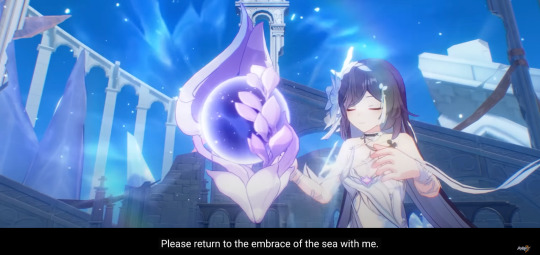
EDIT (9/8/2023): Touched this up a bit and made some grammatical corrections. Thesis is the same, some added support and re-phrasing was done to better convey it.
Sources
A General Introduction to Psychoanalysis by Sigmund Freud
#genshin impact#genshin lore#genshin impact lore#genshin theory#genshin meta#genshin impact meta#fontaine lore#rhinedottir#theory#elynas#durin#melusine#long post
229 notes
·
View notes
Text
Thinking about how hyv foreshadowed Fontaine's lore through a voiceline of Alhaitham.

Lyney talks about this in the Official Fontaine Trailer.





He then says that whoever chooses the right time, place and people essentially controls this whole show and hints at a possible solution for discerning the truth from lie.

#so basically ; think traveller think#maybe i'm reading too much into it buuuuut who knows#arlecchino's monologue is something to consider as well#because an actor—or in her words a 'good actor' also does the exact same thing#hmm but where does justice fit in all this i wonder#excited regardless#genshin impact#fontaine#genshin impact lore#genshin lore#fontaine lore#alhaitham#al haitham#lyney#genshin impact lyney#genshin#genshin theory
224 notes
·
View notes
Text
but can we take a moment to admire arlecchino's expert commandership
i think the reason why the sibling trio doesn't work together in a team is because they don't work together in the lore. they carry out missions independently. lyney's character stories hint to lynette going off on missions by herself and him being the one who checks her routes for her, but he doesn't go with her. all three of them are dps of some kind, and don't really sync up with their play styles because they're meant to be just as powerful independently. the fatui classes that we can be sure were led by arle are the trio and the operatives. the operatives are platoon leaders and often found alone, they're minibosses. that's where her skill lies - she doesn't sacrifice individual power for collective power. while they're all stronger together, none of them are anything to scoff at even alone, so they're rarely in a position where acting independently would hamper them. when each individual is a powerhouse you can only imagine the strength of the collective. it's really fascinating when compared to the hivemind themes seen in sumeru and fontaine. arle does not sacrifice the individual for the collective
#arlecchino#genshin impact arlecchino#the knave#fontaine lore#lyney#lynette#freminet#fatui#genshin impact fatui#fatui harbingers#🏷
93 notes
·
View notes
Text
Is Furina a Hydro Eidolon? And other Fontaine 4.1 theories
I finished the Archon Quest and I have a LOT of thoughts, but mainly one solid theory I thought about after I finished it. And I rambled on and on in my friends DMs about this too lol so now I'm rambling about it here.
The reason I believe Furina to be a Hydro Eidolon is that she matches perfectly with the description of Hydro Eidolon replica's that we saw in the Mirage during the summer event. She has the signature blue hair and everything. And I think she could possibly be the Hydro Eidolon of the former Hydro Archon.
Another reason I think she might be a Hydro Eidolon is because I also think she might not even be the archon of Fontaine. During the archon quest, Arlechinno says that she tried to take the Gnosis from the Hydro Archon but that Furina didn't have it. She also noted how Furina practically begged for her life instead of fighting back like all the other Archons would have done.
So she thought maybe it was with Neuvillette but she doesn't disclose why she believes it's not with him either. So if it's not with Neuvillette and it's not with Furina, where could the Gnosis be? My theory, it's probably in those very scales that Furina uses to judge people. If Furina isn't an archon herself, than it would make sense why she relies so much on Neuvillette who is one of the Sovereigns, but also would explain why Furina would even need the Gnosis and has to safe guard it some place important or use it's power.
So far, we've seen that the Archons aren't really that caring about the Gnoses for some reason, but my theory as to why is because unlike Furina they aren't being watched by an old Dragon Sovereign, and have no need to really use it's power anymore. The Gnoses are a catalyst for an Archon's power obviously, but it's not the thing that grants them power. A lot of the archon's we've met already besides Furina seemingly are already really powerful creatures (Venti is a wind spirit/nymph thing who also has connections with the old goddess of time, Nahida has direct access to Irminsul whenever she wants, Ei has the Plane of Euthymia and the Sacred Sakura tree that literally can cleanse traces of the abyss from the earth, and Zhongli can bind anyone to a contract even those "above" him in power.) But Furina can't hold the Primordial sea back at all. She has to rely on Neuvillette, who can't solve the problem forever for some reason. He even says it's a "sentencing" as in its a punishment set by a judge.
I think the reason neither of them can really solve the problem is because 1. Neuvillette isn't as strong as he used to be now that the Sovereigns powers have been split in 7, and 2. Furina isn't an archon and thus doesn't have the power to rewrite the laws of teyvat like the other Archons can. The Prophecy is probably a set in stone rule that HAS to happen, and with no Archon present that means there's nobody around to change that rule. Furina's "plan" that she's been 'working' on could very well be a plan to become an Archon, which is why she's always acting so extroverted and is trying to make everyone love her. She probably believes that if she makes everyone in fontaine have faith in her, than she can ascend and become the Archon and then save all of Fontaine. But she can't possibly reveal that she's NOT an archon because than that will throw everyone into disarray and reveal that Fontaine has been a godless nation this whole time.
34 notes
·
View notes
Text
The 4.2 livestream was fucking insane and I'm going to talk about it.
SPOILERS FOR GENSHIN IMPACT 4.2 LIVESTREAM FOR THOSE WHO HAVEN'T SEEN IT YET!
Okay, so as I already speculated, Focalors is playing pretend. The livestream tells us that when an NPC(?) asks why Furina deceived them.
WHICH IS A GOOD FUCKING QUESTION- what reason does furina have to be a liar? And from what it seems, Neuvillette isn't involved in this "play"
We know Furina will go on trial- Neuvillette seems very upset and recalls something. Could he be recalling more of the prophecy? Could he be recalling something from 500 years ago?? I NEED ANSWERS I AM FUCKINH IMPATIENT.
"You are a devious one, Focalors" - Neuvillette, which is why I stated that it's safe to assume he had no part in Furina's lies- maybe he just played a role in Focalors' drama, but clearly he was not aware.
"Everyone's dead" "...papa what should I do"
WHO THE FUCK IS PAPA? Neuvi are you a dad? However- I don't recognize the voice of the character saying "Papa". Is it Furina? Navia?.....does Neuvi have a dad ?? The more I think about it the more I think Navia is saying it (Taylor's version) /j for all
AND THEN WE GET TO MEETING CHILDE'S MASTER? BRO SHE'S FINE AS FUCK. From her words it smells like she planned out this prophecy or she has a major part in it- especially since we're hopefully meeting her.
I hope to fuck she's playable...she is hot. I have so many questions with this live stream, so much lore to get into. I never focused on genshin lore this seriously but because Fontaine is based off of France and I speak french I have an obligated strong interest in this nation's lore.
So what exactly are my thoughts? My theories are that there are three hydro archons, Furina...the oratrice, and Furina. In her gameplay you can see her outfits swap from white to black and vice versa. I think her white clothing is her archon abilities and her archon self present, and her black clothing is her original self- just a girl who has to act as the nation's all knowing God. It sounds weird for the oratrice to be an "Archon", but hear me out.
The oratrice probably holds some of the archon's power or consciousness, which is why trials need to happen in order for it to gain power. It has a mind of it's own, how? Is the gnosis there? In my mind, 1/3 of the hydro archon is there.
Another reason to why I think there are 3 archons is because at Lynette's lvl up material's boss, the robots dancing: There are 3 thrones that the archon would sit on. Why 3 specifically?
RAHH I HOPE WE GET ANSWERS DURING THESE ARCHON QUESTS I NEED TO KNOW THIS SHIT!!
ALSO! I will be pulling for c6 Furina on NA servers :) So I will def. post for that! And when I play the archon quest, hopefully that'll get me to write and draw. I need to....be given the LORE!
#Winter Rants*#genshin impact#genshin livestream#4.2 genshin livestream#genshin spoilers#genshin#genshin focalors#genshin furina#furina genshin impact#genshin lore#neuvillette genshin#navia genshin#fandoms#i need the lore#lore#character lore#story lore#fontaine lore#fontaine characters#fontaine story#fontaine spoilers#genshin impact fontaine#fontaine genshin impact#fontaine#frenchies
22 notes
·
View notes
Text
Thinking about the fact that we see all the other Narzissenkreuz Quartet members as adults except Rene at least briefly. Jakob is an adult when we meet him, Mary Ann is at least a young woman physically, and Alain appears as an adult in a flashback in Neuvillette's story quest. However, we only ever see Rene as a child, or as a hydro being (Narzissenkreuz). It hits harder as he even renamed himself after a storybook villain, as if there was a separation between his childhood self and what he was becoming. He grew up too fast (they all did) and took on too much responsibility to ever view himself as a child, I think.
And in the end, when he's given in and is dying, he chooses to take on the form of a child again.
9 notes
·
View notes
Text
World Building Headcanons for Teyvat
Some of these are stuff I believe while some of these are just plain old stupid. Hope yall enjoy!

Every day of the week is named after the different Archon's demon names like Moraxday, Buersday, etc. Stupid but takes some real-world inspiration from actual days of the week and months
Mondstadt has a holiday in the summer called 'Freiheitstag' which roughly translates to 'Freedom's Day' where Mondstadt celebrates the freedom they earned
and, inspired by Hunchback of Notre Dame, Fontaine has its own version of 'Topsy Turvy Day' where it's a whole weekend when they celebrate artists, performers, etc. People come from all around Teyvat to celebrate and perform since Fontaine is the centermost nation. This holiday also is celebrated in every nation now and Mondstadt has the second-largest festival, after Fontaine
Diluc's Father Crepus let the Knights of Favonious take over Angel's Share twice a year to have a 'host club' sort of evening and all the proceeds go to charities around Teyvat. Diluc lets them do it once a year now but all the proceeds go to charity still and he is always the biggest donator
The Knights hold a large end-of-year ball every year which all of Mondstadt attends in big fancy dresses for a night of free food and drinks to celebrate the new year
Finally, I know I've said this one before and I'll say it again! Alice builds all sorts of contraptions that are made for Klee in mind and sells them to all the kids in Teyvat. This includes radios and records along with projectors. She single-handedly started the film industry in Fontaine and now animation and other films are huge there.
Due to projectors and movies, Klee gets Albedo, Kaeya, and sometimes other knights into Kaeya's office and they have weekly movie nights
#genshin impact#genshin headcanons#teyvat worldbuilding#worldbuilding headcanons#genshin worldbuilding#genshin impact headcanons#alice genshin impact#klee#klee genshin impact#fontaine headcanons#fontaine#hoyoverse#mondstadt lore#genshin lore#fontaine lore#morax#venti barbatos#focalors#buer#baal genshin impact#zhongli#venti the bard#genshin nahida#genshin#genshin has taken over my head and my soul#teyvat#teyvat headcanons
94 notes
·
View notes
Text
The Symbol of the City

I’ve noticed some interesting things in Fontaine that I want to share, but I haven’t had time to play any quests besides the main storyline so I’m doing it with the understanding that some of it might fall through. All corrections are welcome though.
This post will cover:
Fontaine history
The relationship between music and technology
The meaning of technology according to German philosopher Martin Heidegger
The influence of the 1927 silent film Metropolis in Fontaine’s narrative
How the Bible plays into all of it
Music & Technology
Firstly, the Fontaine symbol looks like 2 things:
A fountain and a retro futuristic city design.
At the same time, the design of the fountains in the city resemble a musical organ. The melusine named Blathine outside Opera Eclipse mentions that the pillars of water formed in the fountains are “like the music that plays in the background during an opera”, most likely referring to an organ.
On the other hand, a city works as a high expression of technological advance.
These two elements are closely tied to the history of the region. Remuria’s empire centered its development around the arts and intellectual fields (especially music), while Fontaine does it around machinery and engineering.
Music and technology are thus introduced as companion concepts.
It’s not the first time Genshin relates the two though: back in last year’s Lantern Rite event, it was revealed that madam Ping (alias Streetward Rambler) used to have a rivalry with Guizhong over the authenticity of music that is composed and played on an instrument and that which is produced by a mechanical invention.

In Guizhong’s opinion, while mechanisms were no substitute for human composers, they were yet capable of producing simple but fine melodies. But Streetward Rambler believed music to be an expression of the soul, an emotional enterprise that could never hope to be replicated by machinery.
—Story Teaser: Echoes of the Heart
Eventually, Madam Ping changes her mind: Guizhong’s memory lived on through her invention, and madam Ping was able to express her feelings of grief accompanied by the tune in the bell she left behind.
But Streetward Rambler did not acquire [Guizhong’s bell] from Rex Lapis for the purpose of producing further funerary tunes. No, each time she rang it, it was to play the tune that Guizhong composed on it.
The two once clashed over their beliefs about the meaning of music, who would have thought that with Guizhong’s passing and Streetward Rambler’s mourning, two tunes composed in discord would eventually become one harmonious composition?
That which is expressed through an instrument is not that different from that which is produced by a machine. While the musician uses their instrument to project their emotions as an extension of the soul, an engineer uses machinery to project their intellect as an extension of the mind.
Estelle: Truth be told, letting someone as feeble in body as I serve as a blacksmith is the main point of this machine.
Estelle: Humans can use tools, and exquisitely-designed tools can make the impossible, possible.
Estelle: Some say that all automated forgings are hollow and soulless. But if you ask me, the machine is just as much of a tool as a regular smith's hammer. Really, I would love to see those smiths knock metal into shape with their bare hands...
—Semi-Automatic Forging quest
Music was the defining trait of Remuria’s identity as a nation, and technology is one of Fontaine’s.
Technology & Domination
King Remus built multiple fairways (perhaps like the pipes of an organ?) that he used to rule his nation, either literally or metaphorically with music, and conquered neighboring tribes in order to have full control of Remuria and avoid its prophesied demise:
The King, resting peacefully at the heart of the palace, listened closely to every melody and every note coming from every corner of the empire. Upon hearing any discord, the God King would correct it immediately with a pluck of his strings, bringing perfection to the symphony of his empire.
To spread the harmonious symphony throughout the world, he built far-reaching fairways, which conveyed the melodies as never ending ripples from Capitolium to every corner that sat above the high waters.With his immortal fleet, Remus conquered all the islands on the high waters. Even the great dragon beneath the abyssal depths submitted to his power. Those were the best days since the end of earliest peoples, and eternal prosperity seemed so near at hand.
He believed that as long as all the cities echoed with this greatest of songs, they would escape the judgment of fate and at last reach the land of eternal bliss.
—The history of the decline and fall of Remuria
Fontaine is currently doing something similar, just that instead of conquering other people through the symbolic force of music, they’re asserting control over the land through first - the allegorical climate change they’re not preventing, and second - the developing of technology at the expense of the integrity, health and life of their own people:
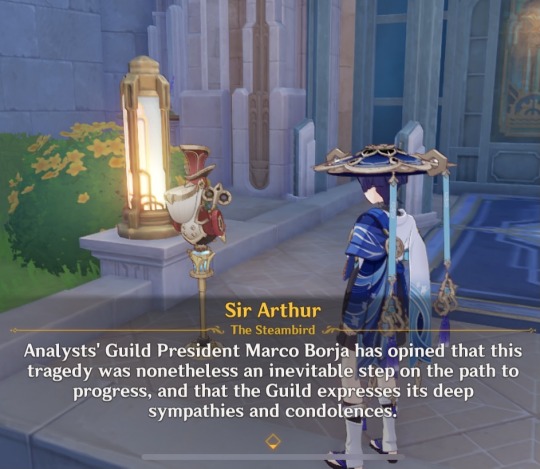
Sir Arthur: Disaster! Disaster! At a recent public exhibition, the Babich Automated Analysis Engine suddenly exploded in a shower of gears, causing great injury and death to onlookers!
Sir Arthur: Mr. Babich himself was severely injured and remains unconscious!
Sir Arthur: Analysts' Guild President Marco Borja has opined that this tragedy was nonetheless an inevitable step on the path to progress, and that the Guild expresses its deep sympathies and condolences.
Musical instruments in Remuria function the same way machinery does in Fontaine, they are technology developed with the purpose to control by forcing the enemy tribes into submission or as a justification to exploit their workers.
Allegorical (or not so much) imperialism and capitalism, if you will.
These are precisely the dangers that German philosopher Martin Heidegger warned about technology in 1954 with his essay The Question Concerning Technology.
The Question Concerning Technology
Heidegger centered his work around the concept of “being” not as isolated sentience, but as a result of the relationship between a subject and its surrounding environment. He thought, for instance, that the term “ousia” (known as “essence” in philosophy) had been misinterpreted by previous philosophers and lost its real meaning, which he attributed to the conflicts of the modern era due to forgetting what it meant “to be”.
To put it simply, the phrase “I think, therefore I am” proposes the act of thinking is the essence of what it means to be, but Heidegger believed there had to be a state prior to the generation of that thought for the thought to be generated in the first place. A being exists with its environment, and that relationship between the subject and object is the essence of what it means “to be”.
However, it is hard to realize this reality of “being”. For example, when you’re doing an activity for long periods of time like writing or hammering a nail on the wall, you will eventually forget the existence of the pen or the hammer in your hand. At that point, it is not part of your reality even though it very much exists. Life in the modern era is the same, we become blind to certain parts of our existence in doing routinary tasks to survive until we interact with those parts.
So everything we perceive or interact with becomes “unconcealed”, but it’s a reality that’s defined by our own individuality, not an objective truth.
In this sense, the “essence” of technology is not anything technological, it’s not the machines or what’s produced with them, but something that goes deeper into its relationship with humanity.
Heidegger thought the essence of technology was neither a means to an end nor a human activity, but a way to reveal (or “unconceal”) reality.
Technology embodies a specific way of revealing the world, a revealing in which humans take power over reality. While the ancient Greeks experienced the ‘making’ of something as ‘helping something to come into being’ – as Heidegger explains by analysing classical texts and words – modern technology is rather a ‘forcing into being’. Technology reveals the world as raw material, available for production and manipulation.
—Future Learn, The Technological View of the World of Martin Heidegger
Heidegger draws attention to technology’s place in bringing about our decline by constricting our experience of things as they are. He argues that we now view nature, and increasingly human beings too, only technologically — that is, we see nature and people only as raw material for technical operations. Heidegger seeks to illuminate this phenomenon and to find a way of thinking by which we might be saved from its controlling power
—The New Atlantis, Understanding Heidegger on Technology
Machine-like People

The danger Heidegger warned about had to do with becoming a society that understands all aspects of reality through the technological lens: that both nature and people would be treated as nothing but resources to be used, like pieces of a machine.
All things increasingly present themselves to us as technological: we see them and treat them as what Heidegger calls a “standing reserve,” supplies in a storeroom, as it were, pieces of inventory to be ordered and conscripted, assembled and disassembled, set up and set aside. Everything approaches us merely as a source of energy or as something we must organize. We treat even human capabilities as though they were only means for technological procedures, as when a worker becomes nothing but an instrument for production. Leaders and planners, along with the rest of us, are mere human resources to be arranged, rearranged, and disposed of. Each and every thing that presents itself technologically thereby loses its distinctive independence and form. We push aside, obscure, or simply cannot see, other possibilities.
—The New Atlantis, Understanding Heidegger on Technology
Fontaine has adopted this general worldview not only in relation to the workers, but also in the way they treat court cases as spectacles.
If Sumeru explored the question of what it means to be or what can be accepted as a living being (through stories like that of Karkata, Benben and Wanderer), Fontaine on the other hand seems to be asking what separates a living being from a machine when interpreted through the lens of technology, where workers are exploited as disposable objects and people’s tragedy is commodified for entertainment.
For King Remus also, those within his borders had to be controlled, and those outside had to be conquered.
Both Fontaine and Remuria are cities whose culture has become technologically driven.
When society adopts the technological lens —whether technology itself is involved or not— to understand themselves, their humanity is stripped from them. And do they not become just like a machine?

Gontharet: Those who always work and work will find themselves little different from clockwork machines. It is only through constant questioning and asking that we can forge a new path!
Gontharet: Our history and present are all proof of this.
"All I have to do is put on my helmet, shut out the background noise, and carry out my orders."
Freminet began to see himself as an unfeeling clockwork toy.
—Freminet’s Official Introduction
Freminet, alongside Lyney and Lynette, is a member of the House of the Hearth, a secret Fatui organization composed of orphans who work for the Harbinger Arlecchino, who they call “father”, doing missions of espionage and other not so legal activities that more often than not risk their safety.
It is unclear what exactly is Freminet’s role, but by the looks of it, he seems to feel less like a human and more like an automaton when carrying out his missions.
The City As A Symbol
(or: let’s get biblicaI)
There is no doubt that Remuria is based on the Roman Empire, but there’s another aspect to Fontaine that’s very intrinsically influenced by the Bible: the city as the epitome of human virtue and decadence.
God’s kingdom is represented as a garden. Adam and Eve are said to have wandered in the wilderness after they were kicked out. When their son Cain became jealous of his brother Abel, who was receiving God’s favor, he murdered him and was marked as a sinner.
Cain further isolated himself from God by running away and establishing the first city. A city in ancient times was just a group of homes, but what characterized it was the tall walls Cain erected as a means to protect himself from retaliation for his crime.
Cain’s city, much like Jerusalem and Babylon later, breeds a culture of violence and abuse, but also of man-made inventions like animal domestication, arts, and metalwork —aka, technology.
Those in power (starting with King David) always end up succumbing to their lowly desires, impulses and vices in Jerusalem. Babylon (which enslaved the Israelites) goes on to become not just a single city in its historical period, but the metaphorical and almost cyclical condition in which humanity condemns itself over and over again through the symbol of the city.
There are two main ways to deal with humanity becoming corrupt in the Bible: a flood or a messiah (mr Jesus The Christ for the Christians). The flood reboots everything and the messiah solution is more about accepting the city for its virtues and defeating sin through death and reincarnation, then God brings his garden into the world, so it’s like a Hannah Montana situation with the best of both worlds.
Anyway, let’s go back to Genshin:
After the first civilization was nuked with a flood, the survivors lived in the wilderness:
When the tide receded and the earth was revealed again, no cities nor civilizations now stood above the high waters. Survivors and the newborn alike lived amidst the forests and rivers, shorn of all knowledge and wisdom. Human lives were no different from those of wild animals on the earth or in the sea, driven on by the laws of nature — muddling through time with neither beginning nor end.
Civilization and order were finally restored to the land named Fontaine the day the great king Remus descended upon Meropis in his golden Fortuna. He taught people how to farm and raise crops in the land, and built temples and cities with giant rocks to house the people. Most importantly, it was he who spread the beauty of music and art, which differentiated humans from other living things, causing them to see themselves as masters of all things.
—The History of the Decline and Fall Remuria
Remus taught the people of what would become Remuria good things, but also reintroduced arrogance. And the cycle of Cain’s city was fulfilled again, with the nation causing their own destruction.
Remuria also is described with some kind of tower at its center, just like Babylon. And from the story of the Tower of Babel, this tower can be understood as the symbol of the city itself, the expression of human ingenuity.
I want this to be understood not as a direct reference to the biblical stories, but as a narrative parallel to an ancient story about the dangers of technology.
A city is an isolated concentration of humanity’s sins and virtues, surrounded by tall, imposing walls. A city gives rise to arts and technology, and it also breeds hedonistic desires and dangerous machinery.
I’d say the tall walls of Fontaine aren’t just to make the city look like a dam and annoy players who want to climb. And its technology seems on the right track for devastation.
Technology is not the enemy though

I said in the beginning that Fontaine’s symbol resembles a retro futuristic city. More specifically, both the symbol and the design of the city itself remind me of the futuristic envisioned city in Metropolis, a 1927 silent film by director Fritz Lang that has influenced the sci-fi genre to this day.
Metropolis is divided into two classes: the elite that lives on the surface, and the workers who live underground and produce the energy that powers the city.
(Sound familiar?)

The movie makes a point of depicting the workers moving mechanically, in a zombie like state, when they walk towards the machine they operate and while they work on them, as if they were parts of the machine themselves.
The son of the city’s master, Freder, ventures into the underground tunnels and discovers this reality for the first time. When a worker fails to operate the machine correctly, it suffers a malfunction that causes an explosion, leaving many victims behind. Freder is hit by the explosion and has a hallucination where the machine turns into Moloch, a pagan god in the Old Testament that had to be fed human sacrifices, while a group of slaves is being forced into its mouth, and then the workers behind them walk into it voluntarily.
A woman called Maria promises the underground workers that a mediator will eventually help them, as Maria believes the “head” (upper class) and “hands” (workers) just need a “heart” to communicate with each other. This mediator turns out to be Freder, who voluntarily takes the place of one of the workers and suffers the horrors of working in the machines in the flesh.
When Freder’s father finds out, he asks his local mad scientist —who has been working on a robot with human faculties— to give his creation the appearance of Maria, and orders this robot-Maria to twist the beliefs of the workers so they’ll antagonize the real Maria. Robot-Maria also shows up in the city as the figure of the Whore of Babylon, and inspires the upper class men to give in to their desires and vices.

Meanwhile, the workers are encouraged to revolt and destroy the very machines they’re enslaved by, against Maria’s ideology of unity. This destruction causes a flood that almost kills the workers’ children, but they’re saved by Maria and Freder.
The workers burn robot-Maria in the stake and later realize it was just a machine. Freder also fights the mad scientist at the top of a building from where the latter falls and dies.
At the end, Freder acts as a mediator between his father and a representative of the workers.
Ok but why was that whole summary necessary?
In essence, Metropolis is both a dystopian cautionary tale about the dangers of technology that we’ve discussed in this post, and also an allegory for the Bible (yes fr).
Maria is a Virgin Mary expy and Freder is the figure of the messiah (the “mediator”), Jesus Christ. He descends from the paradise above and suffers the pains of the people in the flesh. The mad scientist is a stand in for the devil, and Freder’s father represents the kings that continuously become corrupted in the history of Jerusalem.
Maria is who preaches true belief, while robot-Maria represents an idol of false belief that the workers are fooled by and also the sins and desires the upper class are enslaved by.
The flood that’s caused by the workers’ revolt is pretty much self explanatory in the biblical sense, you know what that is.
In the context of the industrial revolution, the narrative of the false belief aligns with what Heidegger would later address as the danger of technology, the inhuman lens through which the reality of the modern man is interpreted. The desire and sins the upper class is seduced by are of course capitalist interests.
Maria doesn’t condemn technology itself, she even tells the workers an altered version of the story of the Tower of Babel in which the tower couldn’t be finished because the intellectuals who designed it and the slaves who were building it just didn’t understand each other. The tower itself was an accomplishment of human ingenuity in her version.
Likewise, the movie closes with the hopes that this new understanding between head and hands will lead into a better, more fair society.
The figure of the messiah is not what’s important, but the ability to conciliate the power of governance and the working power in order to redirect the course of the city into an enterprise that serves humanity instead of using them like a machine.

Now, in the context of Fontaine, the energy that fuels the city and belief are more closely intertwined than in Metropolis.
The city is powered by Indemnitium, a form of energy which is produced by the belief in justice extracted from trials. We’d have to wonder, then, whether the integrity of this belief remains truthful, or if it has been replaced by the false idol of spectacle.
We know that at least one person in the city harbors discontent for the work, the spectacle and the Indemnitium energy:

Message in Cafe Lucerne’s board:
”For future generations, for our descendants, we must refuse work, refuse the trials, and oppose Indemnitium!”
King Remus in Remuria attempted to avoid the fate of their destruction, Fortuna, by conquering other tribes and establishing control over his people through a shared government, yet he ended up fulfilling the prophecy and condemning himself with those very decisions.
So I wonder if Fontaine might be in danger of self fulfilling their own prophecy should the workers of the city revolt against Indemnitium, since the members of the Narzissenkreuz Institute came up with it as a means to avoid their impending fate. And whether the people of Fontaine will survive their prophesied flood just like the children of the workers in Metropolis survived the flood the workers themselves caused.
14 notes
·
View notes
Text
Fontaine: Lolita + Coppélia
So the dancing couple is inspired by the story Coppélia,,,
The script in game was written, but never published so it looks like in the efforts of the public to,, recreate the story of Coppélia,,, they wrote Dr. Coppelius and Coppelia in a Lolita scenario ?? where he as the creator was in love with his automated creation ??
The reference I specifically noticed is that he calls her "my love, my sin, my soul" which is,, a direct fucking quote of the narrator from the book.
And that line... it's fascinating how it comes from the point of this evil man trying to justify himself and make it all sound more acceptable, while damning himself in the same sentences.
It's clever writing but in a deplorable character study, which makes it all the more interesting that Genshin has included it for Fontaine
Bc on top of the obvious French aspects of the ballet Coppélia, having the citizens of Fontaine interpret the unpublished story of the automations turn from the plot of a young man turning from his fiancee to the doll in the window, believing her to be a real woman only for his lover to expose the doll as a doll to regain his affections,,,,, into the plot of a dollmaker in a morally questionable relationship with his doll to the point where she outlives and dreams of the day of joining him in death..... (< not the exact plot of Lolita itself but that reference and the romance aspect is the reference)
well it's curious given the human trafficking issue that is primarily centered on young girls being stolen away that has been going on for decades in the nation of justice esp since lolita is from the pov of that man who was in jail recounting his days when he was freely alone with his stepdaughter, waiting for his trial, but dying before ever being sentenced.
"She said I was her ruler and her god. She said Lousie was gone, and let us make love right away. She said I must forgive her or she would die." - Lolita
"The one who created me and gave me life has already big an eternal farewell to this mortal coil, and when these rusted gears return to the same ash as his bones, all sin will be forgotten, and for flesh and bone, to be forgotten is to be forgiven" - "Clockwork Coppelia" Excerpts
Coppelia wishes for forgiveness, presumably the same as her creator having except she says the sin is only forgiven when it is forgotten, but she fails to grant the forgiveness by remembering him and telling others that she is waiting for her death in the same way he died.
The fontaine research of philosophy place studied sumeru machinery, the guards of the temples. Deshret built those machines in the hopes to protect his people and to keep part of himself alive should his goddess return So for Coppelia to have these similar desires,, but opposite bc she awaits reunited in death and not in life
This could be a reflection of Deshret being a game representative of Ra and the emphasis of life after death in Egyptian culture but. dk
Continuing. His machinery hasn't been affirmed as being made of forbidden knowledge in the same way that Gold's were And his are known for having sentience. As seen by Faruzan's hangout and Tighnari's story quests, as his cores affected the Khaenri'ahn machinery
Which,,, brings us back to Khaenri'ah, as all things do.
Bc outside Sumeru, outside those Khaenri'ahn apologists, the Khaenri'ahn ruin machines are violent and immediately attack on sight. The sins of the nation are largely forgotten, but in Sumeru, we see the Kshahrewar Darshan romanticize and honor Khaenri'ah tech,,, and they are responsive to it.
The sins of the nation are not forgotten, and so the machines are still alive.
8 notes
·
View notes
Text

some tea everyone? ☕
#*furinaa!#furina.txt#genshin impact rp#furina.rambles#focalors.txt#*focalors.#focalors.cry#focalors.rambles#focalors.thoughts#furina de fontaine#Genshin impact#Genshin smut#Genshin impact smut#Neuvillette#Wriothesley#Navia genshin#Clorinde#Furina#Fontaine#Fontaine lore#idk what else to tag#idk what else to add#idk what else to say#idk what else to put in the tags#idk what else to put here#Help#im going insane#furina genshin#what the fuck#genshin neuvillette
5 notes
·
View notes
Text
[4.0] some theories about the primordial sea

Neuvillete: There used to be a special sea on the surface of this planet. The nature of its seawater was rather different from that of the sea we know today...
I’ve been thinking a lot about the primordial sea since finishing the Archon Quest.
SPOILERS: This post presumes you’ve finished the Archon Quest but does not actually talk about the plot points of it. It does spoil a bit of Ancient Colors, the Melusine world quest that takes place in Elynas, as well as a bit of Ann of Narzissenkreuz. It also references some weapon ascension lore.
It didn’t click for me right away, but by now I’m sure a lot of you who have seen End of Evangelion recognized the similarities between the primordial seawater and LCL fluid, and you have also probably noticed the similarities between Rene and Jakob’s Big Plan™ and the Human Instrumentality Project (what is this, the fourth Human Instrumentality parallel so far?). If you haven’t seen End of Evangelion, or aren’t familiar with Eva in general, here’s the gist of what this reference means:
In Evangelion, humans are all descended from Lilith, who is the Second Angel to make contact with Earth. Humanity’s “original sin” is taking Earth from Adam, the First Angel who already existed on Earth before Lilith collided with it in what is known as the First Impact.
Specifically, humans arose from Lilith’s blood, a fluid they know as “LCL.” A shadowy organization named SEELE initiates the Human Instrumentality Project to attempt to “correct” humanity’s sin of existing, and it involves among many other things the union of all souls with both Lilith and Adam. Naturally, in practice this means everyone’s gotta dissolve into LCL and lose the forms that distinguish them as individuals, thereby ascending to a higher plane of existence and in effect “evolving” as a species. Sound a little familiar?


This brings us to theory #1: the primordial sea is…blood. Before dealing with the question of who or what the source of that blood could be, let’s look at some in-game support for this idea:
1. We already know and have seen multiple forms of life born from the wounds of higher beings in the game: the Melusines were born from the wounds on Elynas, and the Jinn were born from Nilotpala Lotuses that bloomed in pools of blood that gushed from the Goddess of Flowers’ body. What’s more, Jakob Ingold’s abyssal form likens the “water” running through Elynas’s body to blood as he attempts to wake up Elynas’s heart. So next time you swim through Elynas, double-check if you’re swimming through an artery!
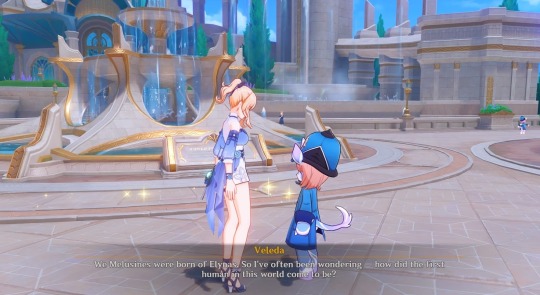
Veleda: We Melusines were born of Elynas. So i’ve often been wondering – how did the first human in this world come to be?
2. This line from the weapon ascension material Wine Goblet of the Pristine Sea:
“Combining the immortal stone with the Ichor essence extracted from primordial water…”
“Ichor” being the blood-like fluid of a higher being. It’s not quite a smoking gun, the primordial sea could still be a mixture of ichor and something else, but it’s something to chew on for now.
3. This very suspicious panel from the Genshin Impact manga, which is Venti’s answer to Aether’s question of whether or not entering Celestia makes you a god:

While it’s not a perfect example for the point at hand, there is still the analogy of a higher being’s blood becoming the sea.
Now, for the “source” question…upon reflecting on just “who” or “what” this sea of blood could have come from, I’m unfortunately left with no satisfying possible candidates. The only creature I can think of that could be the likely source of the primordial sea, other than the Primordial One, is one of the dragon sovereigns, potentially the Dragon King Nibelung. But we know virtually nothing about Nibelung, and we know very little about Teyvat’s history during the time of the dragons. So it’s not that this theory isn’t possible, but it is very difficult to support it beyond mere conjecture based on what we currently know.
And what about the sea being the Primordial One’s blood? I’m not really convinced that it’s a good candidate for the primordial sea’s source if the sea is indeed blood. Instead, I want to take a slightly different approach by drawing attention to the repeated use of the phrase “amniotic fluid” to refer to the sea. I have counted it at least twice so far in-game, let me know if you’ve seen it elsewhere:
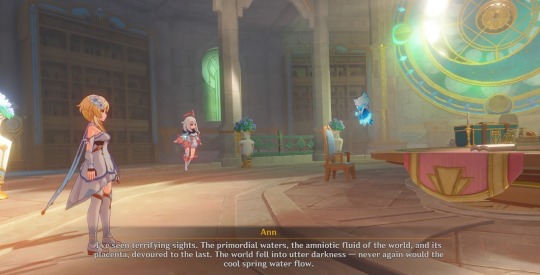
Ann, the little oceanid that seems to have some of Mary-Ann Guillotin’s memories, says she has seen “the primordial waters, the amniotic fluid of the world, and its placenta, devoured to the last.”
In the Nymphs Dream artifact set, the Fell-Dragon’s Monocle, it states: "The star-beasts shall drink the amniotic fluid of the world dry. A hundred years from then, all life on its surface shall be wiped away" (this example doesn’t explicitly say primordial sea, but coupled with the above example I will speculate that they are referring to the same thing).
And while amniotic fluid of some sort is present in many different kinds of animal gestation, including mammals, I did find the use of “amniotic fluid” to refer to the sea very interesting considering that the Primordial One is said to have hatched from an egg:
"On Phanes, or The Primordial One"
The Primordial One may have been Phanes. It had wings and a crown, and was birthed from an egg, androgynous in nature. But for the world to be created, the egg's shell had to be broken. However, Phanes, the Primordial One, used the eggshell to separate the "universe" and the "microcosm of the world."
So, with some hesitation, theory #2: the primordial sea is from the amnion in the Primordial One’s egg? Assuming the egg hatched on Teyvat, it’s a possibility for a source at the very least? But there are lots of holes in this theory too. For example, Before Sun and Moon does not go into detail about how exactly humans were created, just that the Primordial One and one of its shades created them, including all the plants and animals (and I assume by this they mean new plants and animals, because we know from Apep that Teyvat already had elemental lifeforms before the Primordial One took the world from the sovereigns).
Personally, I am very skeptical of Before Sun and Moon’s Genesis story and would not regard it as a reliable source as far as the details go. The possibility that the primordial sea predates even the Primordial One is still very likely, especially given this line from the Broken Goblet of the Pristine Sea:
“Legend says that when the first usurper came to the primordial sea, the first sovereign gave him a goblet of water.”
I am assuming from the rest of this material’s context that “the first usurper” here does not refer to the Primordial One, but to Remus, the God King of Remuria, and as for the first sovereign…perhaps the Hydro Dragon, or Nibelung?
In any case, this is as far as I’ve gotten on the question of what the primordial sea is exactly. I’m not more partial to one theory over the other, so whether it’s a sea of blood, it came from the Primordial One’s egg, or it’s something completely different from that, I will only be surprised if the primordial sea was naturally occurring like the theorized primordial ooze that gave rise to life on our planet.
Concluding Thoughts
What do you know, a relatively shorter post from me! I still have a lot to say about the primordial sea, but going into it here would require going over all the extant Remuria lore and the Narzissenkreuz lore, and this is already a longer post than I intended it to be. With the questions of “what” and “from what” more or less handled, in Part 2 I want to talk about the “why.” Specifically, why are Fontainians born with sin? What does the prophecy mean? What the hell were Rene and Jakob doing, and were they onto something? Part 2 will be…much longer than this. But I hope there was something interesting in this, or it led you to better ideas. Thank you for reading, and also any thoughts and suggestions are welcome <3
#genshin impact#genshin lore#genshin impact lore#genshin meta#genshin spoilers#fontaine lore#genshin theory#theory
47 notes
·
View notes
Text
rene de petrichor is such a guy that i need to dissect. this small town boy from poisson that suffered the violence of a siege, being adopted by a man he couldn't trust, and having to live the life of a child genius. it's imperative that we think of the effects growing up in the narzissenkreuz institute would've had, especially at a time like the cataclysm. from his notes in sumeru you only get the image of a quiet, unassuming boy who's burdened with a task that potentially spells the fate of his people, and possibly the entire world. he couldn't return if he failed. he also had the life of jakob in his hands, and carter too.
the potioneer mentioned in the world quest 'villains' is likely rene, too. this young boy from a small town is behind nearly everything in fontaine, and it's crazy to think about.
in my interpretation, as a child, he was likely quiet and analytic, burdened by shouldering the responsibility of saving lives. he grew up to be rather eccentric, likely a bit full of himself due to his achievements in sumeru ( -- wq 'villains'), and as he reached adulthood and discovered what the truth was meant to be... must have felt a mix of hopelessness and hopefulness at the same time. burdened with knowledge only he could know and no one could understand but him. but he couldn't sit around, he had to do something. he's very furina/erinnyes (who are probably the same entity) in that way. living knowing something that they can't confide in others because they wouldn't understand.
his actions, despite the good intentions, are not seen as good. and as a friend of mine pointed out, though he and the others grew up listening to stories of heroes and dragons, he didn't realize the moment he went from being the hero that would save fontaine to the dragon that would have to be slain. that is, narzissenkreuz.
one of genshin's best npcs ever, if i'm honest. i really hope we get a face reveal soon. i would love if he was playable...
#rene de petrichor#rene#fontaine lore#genshin lore#fontaine#narzissenkreuz#narzissen kreuz#narzissenkreuz ordo#🏷#this is so messy and all over the place but rene ilysm
68 notes
·
View notes
Text
Clorinde's name and it's history!
Clorinde is actually named after two things! She's gets her name from both a poem and 5 naval ships named after a specific character in that poem.

The poem in question is called "Jerusalem Delivered" (it's kinda yikes but it's historical so) and anyways there's a female character in this Poem named Clorinda who is fictional. Clorinda in the story is a female knight who saves two people. She was on the "opposing" side of the battle but then changed sides before she died.
There are 5 naval boats named after Clorinda from the french navy and they all have a lot of guns (which is probably why she wields a gun)
Sources:
French Ship Clorinde
Jerusalem Delivered (Poem)
Clorinda
30 notes
·
View notes
Text
The Potioneer, the old man and the Researcher
Just some observations but…
I think that Xiangjun's grandfather, the herb gatherer of Qiaoying, could be Bravais or at least be a parallel for him and the Potioneer of Dryas Woods because there's some interesting things here that are worth looking at !
To begin, the Potioneer and the Grandfather share some common points, they both live secluded (Dryas Woods and Northeast of Qiaoying), create remedies, are dead (or “dissolved”) and the apparition of blue flowers followed their disappearance. Obviously they are not the same person, only similar, should I add that the Potioneer was a young man and that the grandfather is, well…Old enough to deserve this title ?

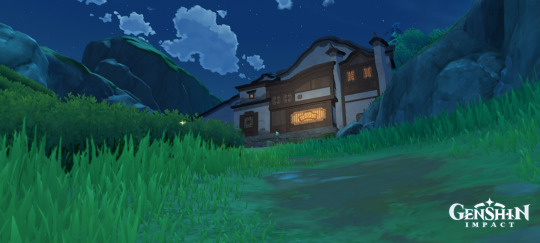


Oncle Luo tells us that the Grandfather is from a foreign land, the closest to Qiaoying village being Fontaine. I wanted to see if Bravais could be this old man, since that's where he is from. Both of them are taking care of or protecting a plant, the old man with his Xiangjun and Bravais with the mysterious animal/plant creature he received. Oncle Luo also tells us that the herb gatherer died three years ago after being attacked by monsters while trying to get the sacred water, he was then buried by the villagers.
Close to Desnos (the coffee guy) in the Research Institute's ruins we can find documents, one mentioning that construction workers found an “undocumented human-excavated tunnel” leading to the deceased Senior Researcher Bravais’ private lab, but without any explanation about his death.It seems that nothing can really contradict the idea that they could be the same person, but then what was Bravais doing in Liyue ? He retired like Bossuet did in Petrichor ? And then where did his interest for Arkhium and research go ?An interest for plants and pharmaceutical stuff is more similar to the Potioneer’s activities before his disappearance.
Since the grandfather reminds me of Bravais, I also thought about the possible similarity shared by Xiangjun and the researcher’s “biological samples” of that strange plant. They are both similar to a plant but at the same time, like an animal (or rather human, in Xiangjun's case).
However, the grandfather acts in a different way towards his “granddaughter”, like a family, compared to Bravais when he got the “biological samples” from who knows who. After all Bravais is a scientist, only taking care and observing the growth and behavior of his subject, when he realizes that further experimentation is pointless he decides to stop feeding it at once. So he does not seem to have any attachment to the plant, he was also ready to give it to “that person” living in Dryas Woods.It still needs to be verified but as far as I remember we can only find those Xiangjun flowers in the Grandfather’s yard and around the solitary Suanni boss. Maybe there's a deeper link between these flowers and the adeptus? Like for the fact that we can find the Soulscent Bloom artifact in the yard…So, what specific thing is required for these plants to grow?

After Doing some quick research I found a real flower called “dryas octopetala” that looks kinda like the Xiangjun flowers to me, but in white ?

There's something else that I find rather interesting, the Potioneer is like another Narcisse (with Narzissenkreuz) in Genshin, the man disappeared in the waters, only leaving a flower behind. But Xiangjun seems to be a sort of opposite, or the two at once : a human flower.
In all these stories water plays an important part. We have the “blessed waters”/Xuanlian sacred water that the herb gatherer tried to bring back to Qiaoying. Of course it reminds me of the “pure water” invented by the Potioneer. So here we have two kinds of water with miraculous properties that can give “purity” to the plants that are watered with it or have something to do with consciousness.
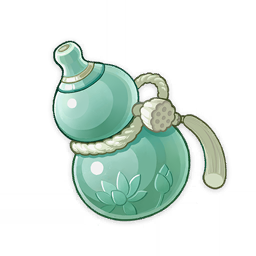

But from this point there's also the Amrita that is important ! (What's going on with God's remains?) I'm not gonna retell the whole story but from this, Rukkhadevata made the Havisptokhm (the tree) grow to anchor Egeria’s consciousness to the mortal realm. Do what you want with these informations because I'm losing myself.


Anyway what tf was the meaning of that Villains Quest ? Simple references to the Narzissenkreuz ? What is Celestia doing hanging in the sky ? Who are Blanche’s parents ? Does this foreshadow something for our dear Childe ? Why is he the bus driver now?
A wise man (Tricky Bulle Fruit) once said : “Dew drops that have formed by absorbing essence... Maybe that's the truth behind the power of water?”
#Me after using 1% of my brain 😎#genshin impact#fontaine lore#FRIKEE#Bravais#Liyue lore#Narzissenkreuz hello guys#dryas woods potioneer#why am I anxious to share my thoughts#Fontaine Research Institute#Genshin npc
1 note
·
View note
Text
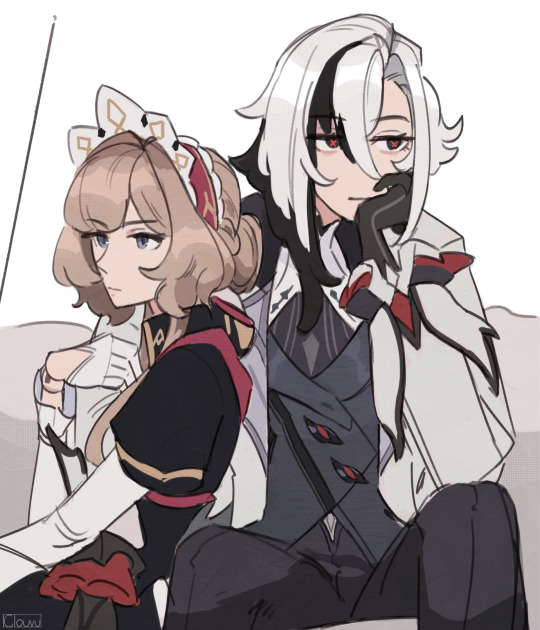
Save me french yuri... Save me
#genshin impact#arledrone#sandrone#arlecchino#haha remember when we all thought that sandrone and arlecchino would both show up in fontaine and be gay together?#good times.... good times#jk i'm ready to end it all actually#I KNOW WE HAVE LIKE ONE LAST MAJOR FRENCH PATCH BEFORE NATLAN BUT IVE JUST ABOUT LOST ALL HOPE#the way that literally every wlw arle pairing got fed so well following arle's drip marketing EXCEPT for arledrn... hate it here so bad#anyways shipping aside HOW is it possible that the frenchiest of french harbingers with heavy ties to machinery#and like two major world quests tied to specifically to her lore and is even MENTIONED of being present in fontaine#also being one of the first harbingers ever mentioned dating back all the way to the description of chode's teaser trailer#just???? doesnt show up??????#Sandy enjoyers are stronger than any us marine because my GOD are we struggling out here#anyways ignore the fact that I completely forgot to draw sandy's wind up key it was hard drawing through the tears#(actually it was cause i half-assed this doodle but we dont talk about that)
1K notes
·
View notes
Text
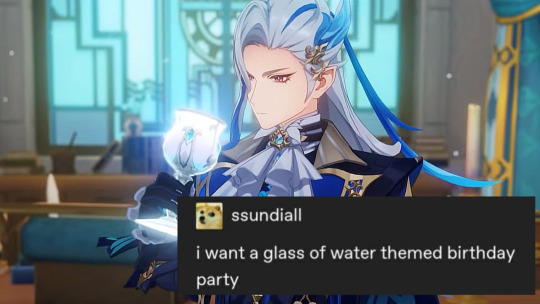


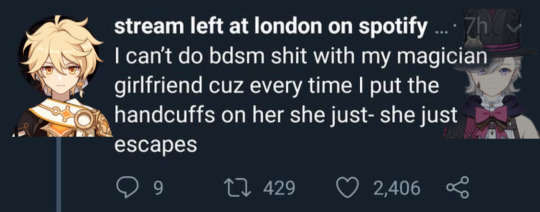


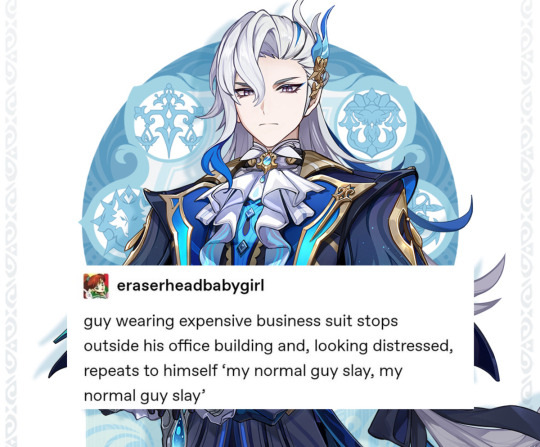



i forgot to think of a caption.. how’s everyone enjoying fontaine ^^
#genshin impact#fontaine#my posts#neuvillette#arlecchino#furina#lyney#clorinde#freminet#wriothesley#wriolette#image#GUYS THE NEW ARCHON QUEST IS SO GOOD#no spoilers yet but their storytelling has improved SO MUCH#and the lore drops 😳😳
2K notes
·
View notes